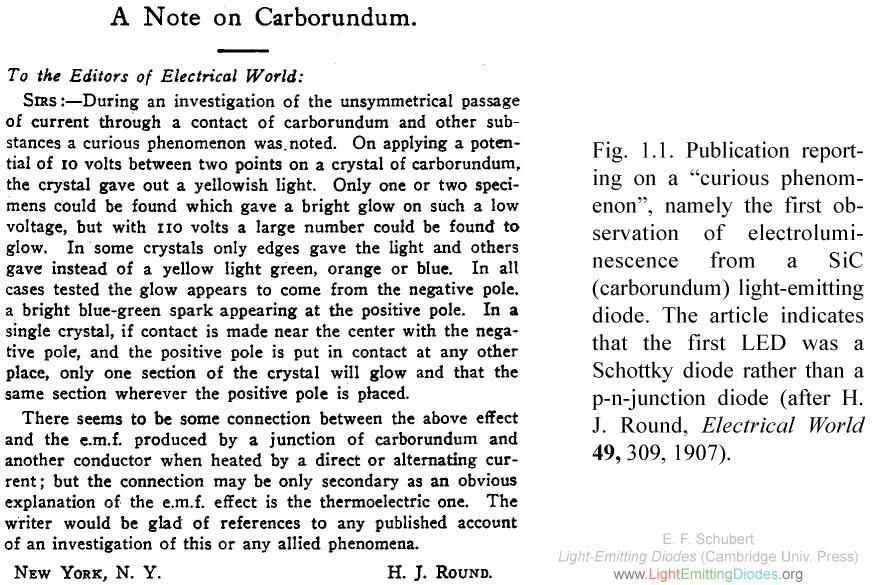
|
Fig. 1.1. Publication reporting on a “curious phenomenon”, namely the first observation of electroluminescence from a SiC (carborundum) light-emitting diode. The article indicates that the first LED was a Schottky diode rather than a p-n-junction diode (after H. J. Round, Electrical World 49, 309, 1907).
|
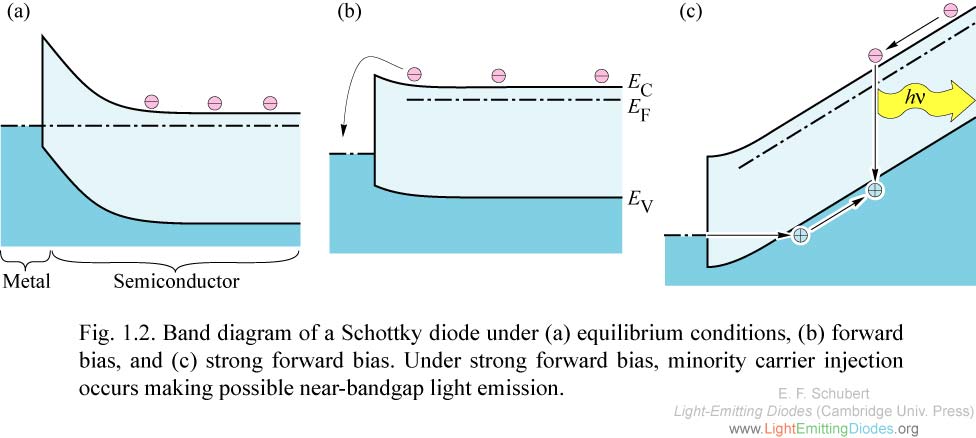
|
Fig. 1.2. Band diagram of a Schottky diode under (a) equilibrium conditions, (b) forward bias, and (c) strong forward bias. Under strong forward bias, minority carrier injection occurs making possible near-bandgap light emission.
|
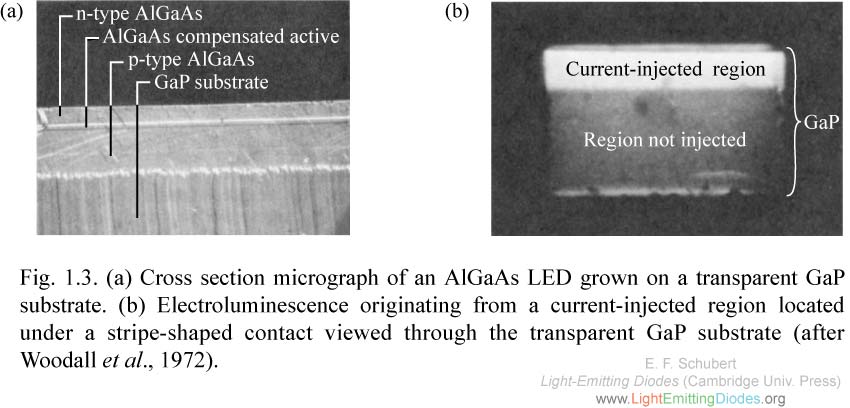
|
Fig. 1.3. (a) Cross section micrograph of an AlGaAs LED grown on a transparent GaP substrate. (b) Electroluminescence originating from a current-injected region located under a stripe-shaped contact viewed through the transparent GaP substrate (after Woodall et al., 1972).
|
.jpg)
|
Fig. 1.4. This classic 1964 mainframe computer IBM System 360 used high-voltage gas-discharge lamps to indicate the status of the arithmetic unit. In later models, the lamps were replaced by LEDs. The cabinet-sized 360 had a performance comparable to a current low-end laptop computer.
|
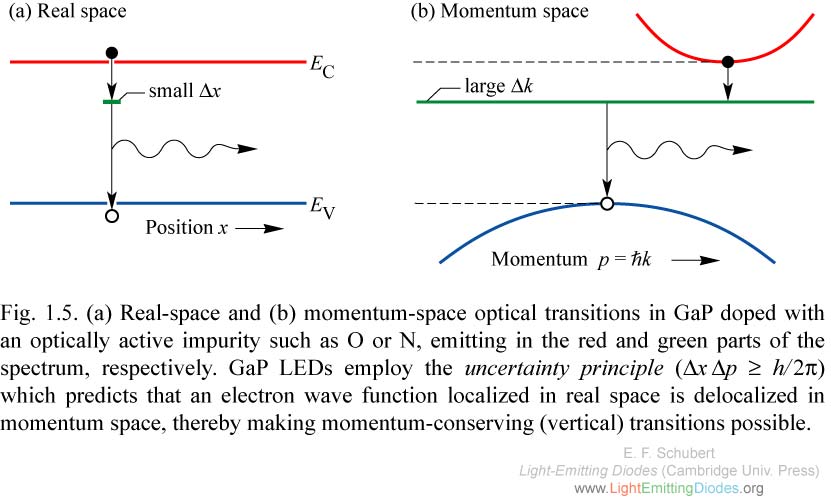
|
Fig. 1.5. (a) Real-space and (b) momentum-space optical transitions in GaP doped with an optically active impurity such as O or N, emitting in the red and green parts of the spectrum, respectively.
|
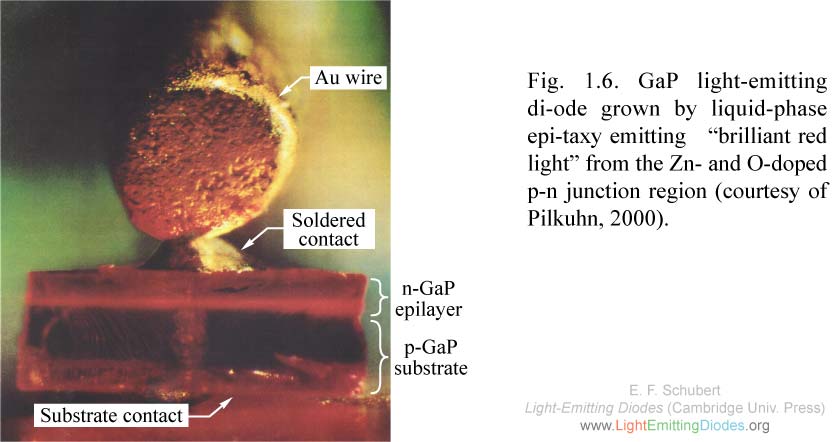
|
Fig. 1.6. GaP light-emitting diode grown by liquid-phase epitaxy emitting “brilliant red light” from the Zn- and O-doped p-n junction region (courtesy of Pilkuhn, 2000).
|
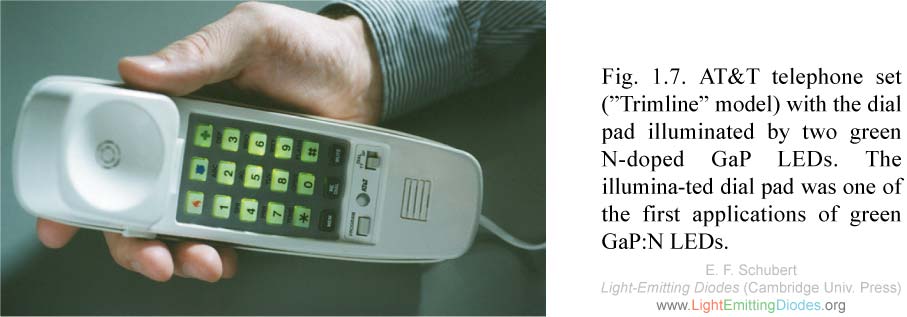
|
Fig. 1.7. AT&T telephone set (”Trimline” model) with the dial pad illuminated by two green N-doped GaP LEDs. The illuminated dial pad was one of the first applications of green GaP:N LEDs.
|
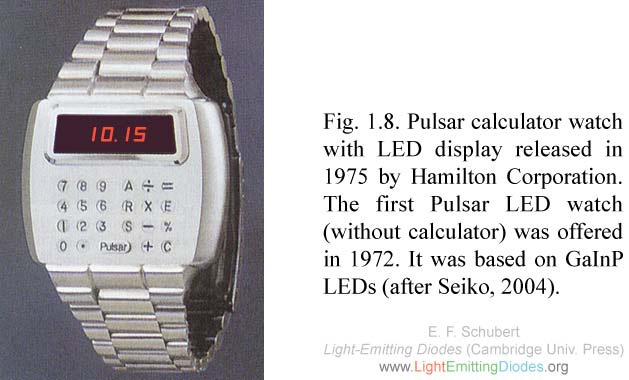
|
Fig. 1.8. Pulsar calculator watch with LED display released in 1975 by Hamilton Corporation. The first Pulsar LED watch (without calculator) was offered in 1972. It was based on GaInP LEDs (after Seiko, 2004).
|
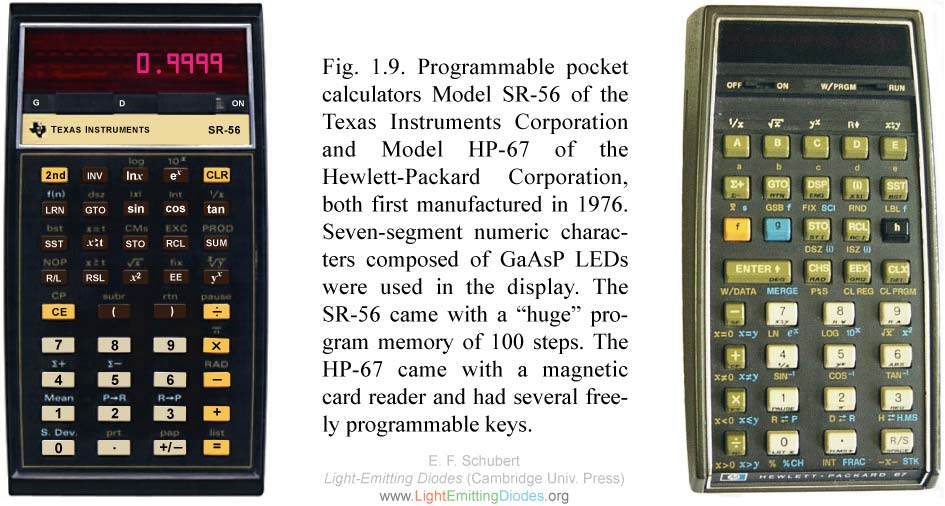
|
Fig. 1.9. Programmable pocket calculators Model SR-56 of the Texas Instruments Corporation and Model HP-67 of the Hewlett-Packard Corporation, both first manufactured in 1976.
|

|
Fig. 1.10. Blue light emission found in 1972 caused by recombining electron-hole pairs created in a highly resistive GaN structure doped with Si and Mg (courtesy of Maruska, 2000)
|
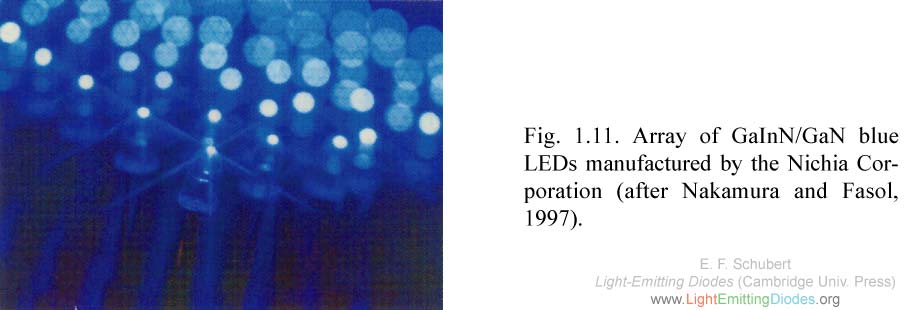
|
Fig. 1.11. Array of GaInN/GaN blue LEDs manufactured by the Nichia Corporation (after Nakamura and Fasol, 1997).
|
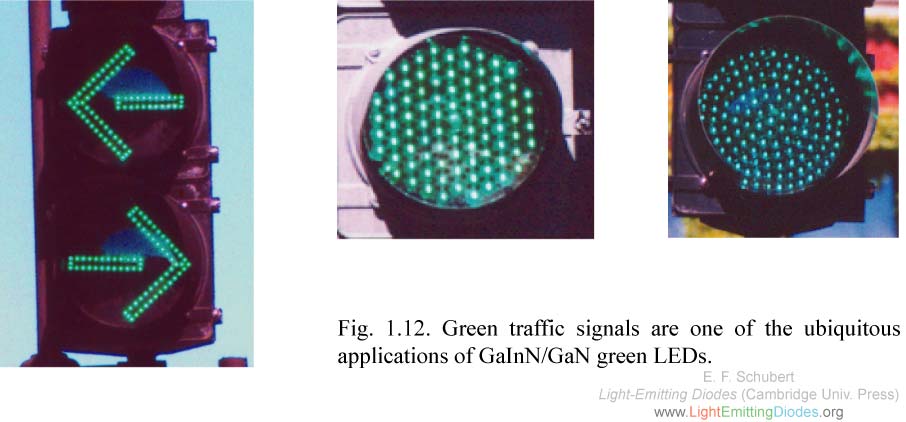
|
Fig. 1.12. Green traffic signals are one of the ubiquitous applications of GaInN/GaN green LEDs.
|
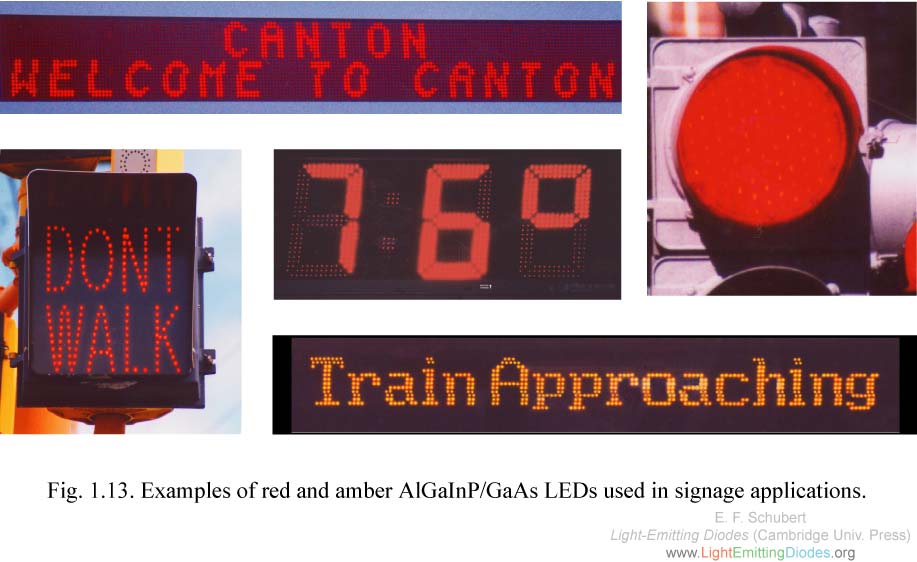
|
Fig. 1.13. Examples of red and amber AlGaInP/GaAs LEDs used in signage applications.
|

|
Fig. 1.14. (a) First goggle with integrated white LEDs used for (b) illumination during medical surgery (after Shimada et al., 2001; Shimada et al., 2003)
|
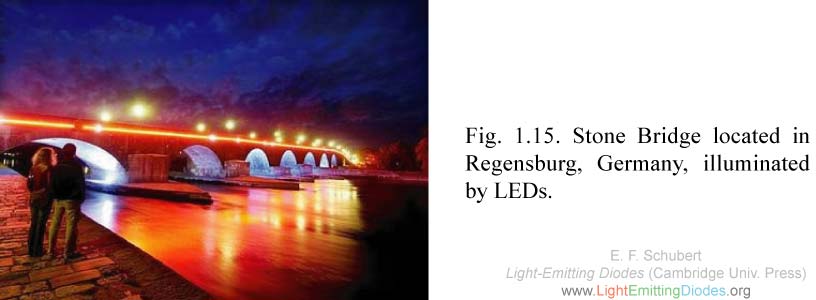
|
Fig. 1.15. Stone Bridge located in Regensburg, Germany, illuminated by LEDs.
|

|
Fig. 1.16. First automotive daytime running lights based on LEDs.
|
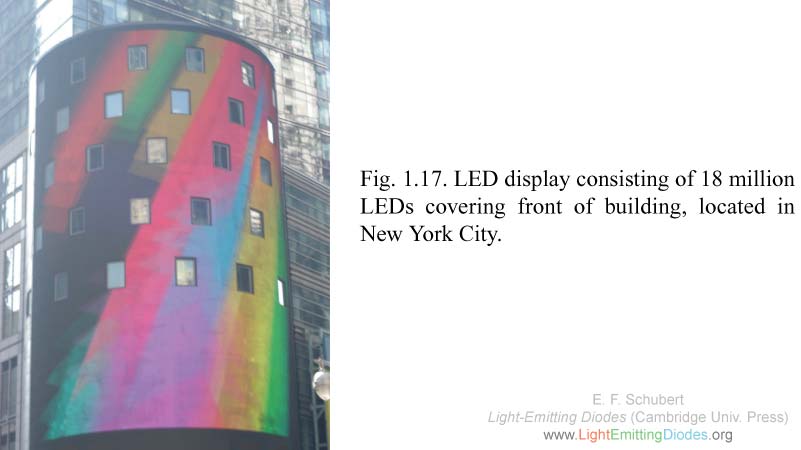
|
Fig. 1.17. LED display consisting of 18 million LEDs covering front of building, located in New York City.
|
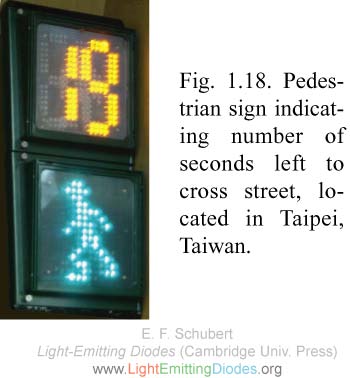
|
Fig. 1.18. Pedestrian sign indicating number of seconds left to cross street, located in Taipei, Taiwan.
|



.jpg)













